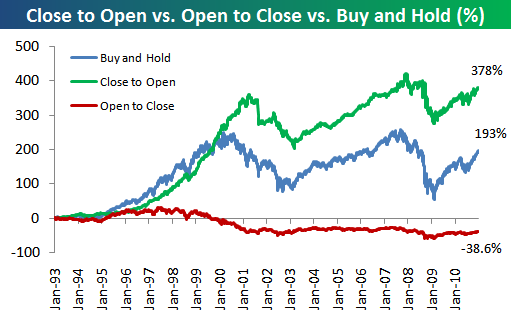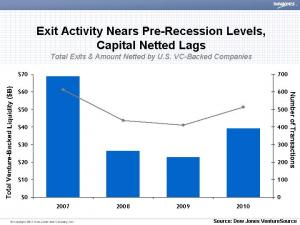To a philosopher, all news as it is called, is gossip, and they who edit and read it are old women over their tea — Henry David Thoreau
Gossip is called gossip because it’s not always the truth — Justin Timberlake
With stocks, there is so much noise and pumping going on that investors can feel like they’re at a Motley Crue concert again. So, how do investors using smart strategies and historical data profit from rumors?
Bloomberg is out with proprietary data today that suggests shorting stocks caught up in merger rumors is a viable, profitable strategy.
Electronic news services, brokerages and newspapers reported at least 1,875 rumors about potential buyouts of 717 companies between 2005 and 2010, according to data compiled by Bloomberg. A total of 104, or 14.5 percent, were acquired, the data show. While stocks that were the subject of takeover speculation initially jumped 2.9 percent, betting on declines yielded average profits of 1.2 percent in the next month, an annualized gain of 14 percent.
In Tradestream, I devote an entire chapter, Grind the Rumor Mill, to rumor mongering and how that plays out for investments – essentially short-selling a basket of M&A rumors.  This strategy works because while real acquisition targets see above-average appreciation, most rumored M&As don’t actually come to fruition.
This strategy works because while real acquisition targets see above-average appreciation, most rumored M&As don’t actually come to fruition.
I included a rumor model developed by Nudge’s Cass Sunstein that he used in his recent book, On Rumors: How Falsehoods Spread, Why We Believe Them, What Can Be Done (affiliate link). This included identifying propagators, qualifying their prior beliefs, and predicting the cascading effect from any change/reinforcement of those priors.
Much of the guts and data behind this strategy was documented by Gao and Oler in “Rumors and Pre-Announcement Trading: Why Sell Target Stocks Before Acquisition Announcements?” (June 2008)
Data

The Strategy
- Research: Scan the WSJ’s Heard on the Street for reported, but unsubstantiated merger and acquisition rumors
- Adjust for market cap: The strategy works better when you remove companies with market cap >$20B
- Short basket trade: Short sell a basket of these rumored targets and hold for 70 days after the rumor first appeared. Cover. Hedge if you like.
- Timing best for hot M&A years: if M&A heats up (like now, right), the data show the strategy works even better
Last thing
The Bloomberg research found that this short-the-rumor strategy worked (+14%) even when it coincided with other contradictory bullish signals like call buying.
Call volume in New York-based Jefferies Group Inc. jumped amid unconfirmed takeover reports on Feb. 27, 2008. Calls on the company changed hands 12,692 times that day, 24 times the four- week average and the most in almost a year, and the shares gained 3.7 percent. A deal never occurred and Jefferies dropped 3.4 percent the next day, 10 percent the next week and 20 percent in 30 days. The S&P 500 lost 4.7 percent in a month.
Caveat emptor: I have not actually used this strategy in portfolios (I’m pretty much long only) and I think it would take balls of steel to really stick to it.
Further Reading on Investing and Rumors:
- On Rumors: How Falsehoods Spread, Why We Believe Them, What Can Be Done (affiliate link)
- Rumors and Pre-Announcement Trading: Why Sell Target Stocks Before Acquisition Announcements?” (Gao and Oler, June 2008)
- Mark Bagnoli, Messod Daniel Beneish, and Susan Watts, “Whisper Forecasts of Quarterly Earnings per Share,” Journal of Accounting and Economics 28 (1):27-50 (March 1999)
- Nilhabra Bhattacharya, Aamer Sheikh, and S. Ramu Thiagarajan, “Does the Market Listen to Whisper Numbers?” Journal of Investing, Vol. 15, No. 1 (Spring 2006): 16-24
- Susan Machuga, Karen Teitel, and Ray Pfeiffer Jr., “Explaining the Surprising Performance of Whisper Forecasts of Earnings” (July 2008)
- Werner Antweiler and Murray Frank, “Is all that talk just noise? The information content of internet stock message boards” (August 2001)











 overlayed on top of stock index charts. GDT
overlayed on top of stock index charts. GDT 



